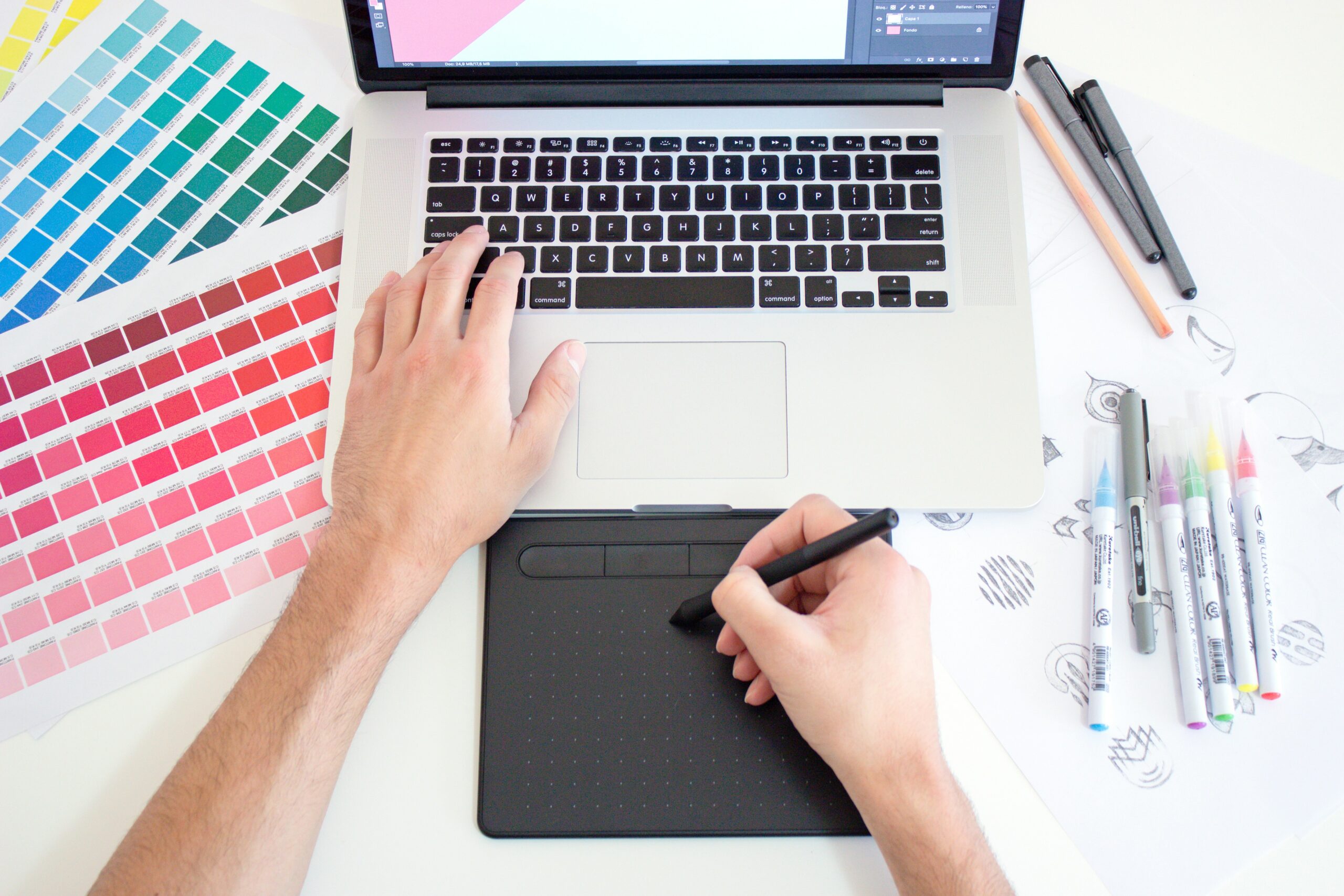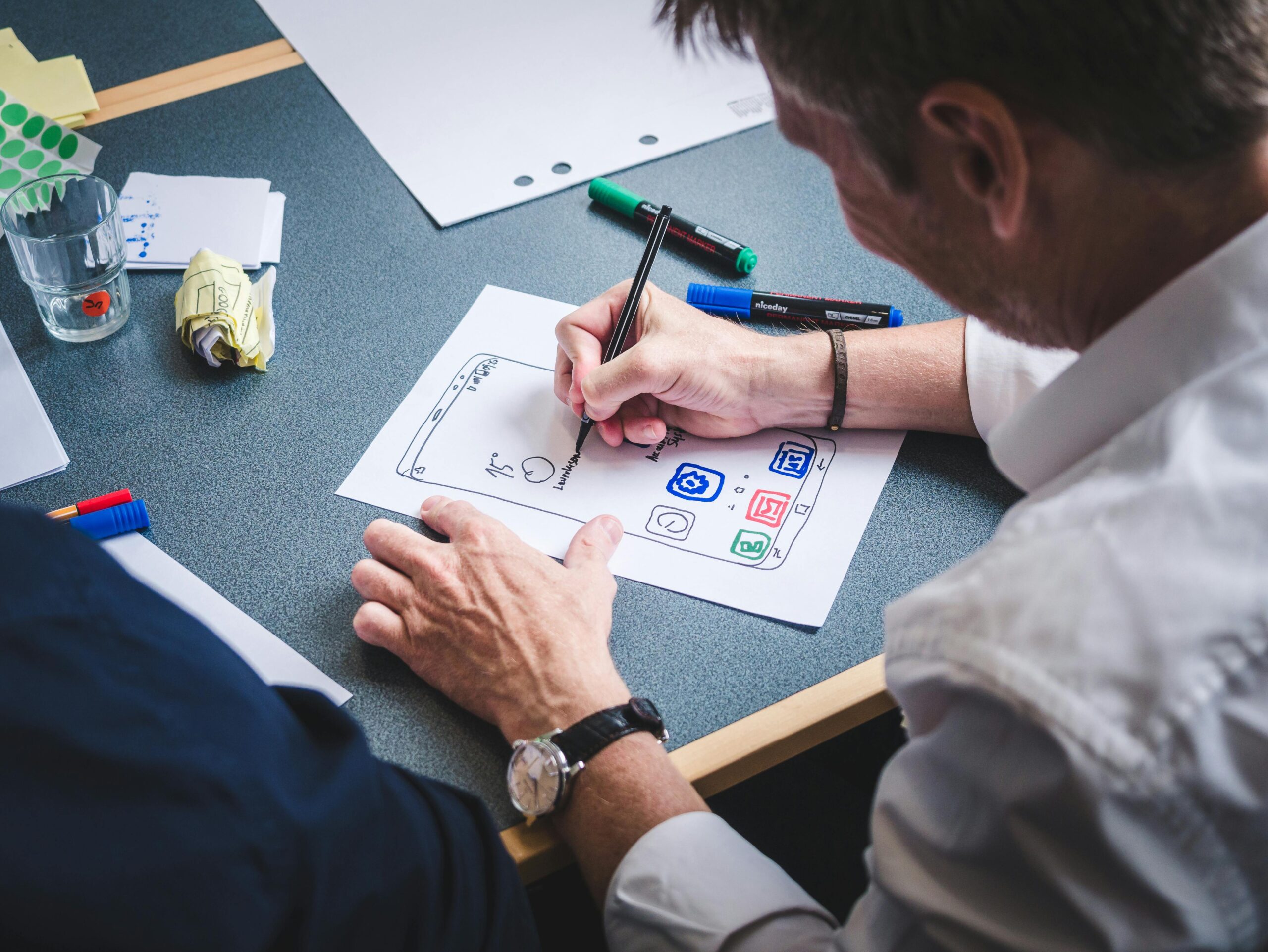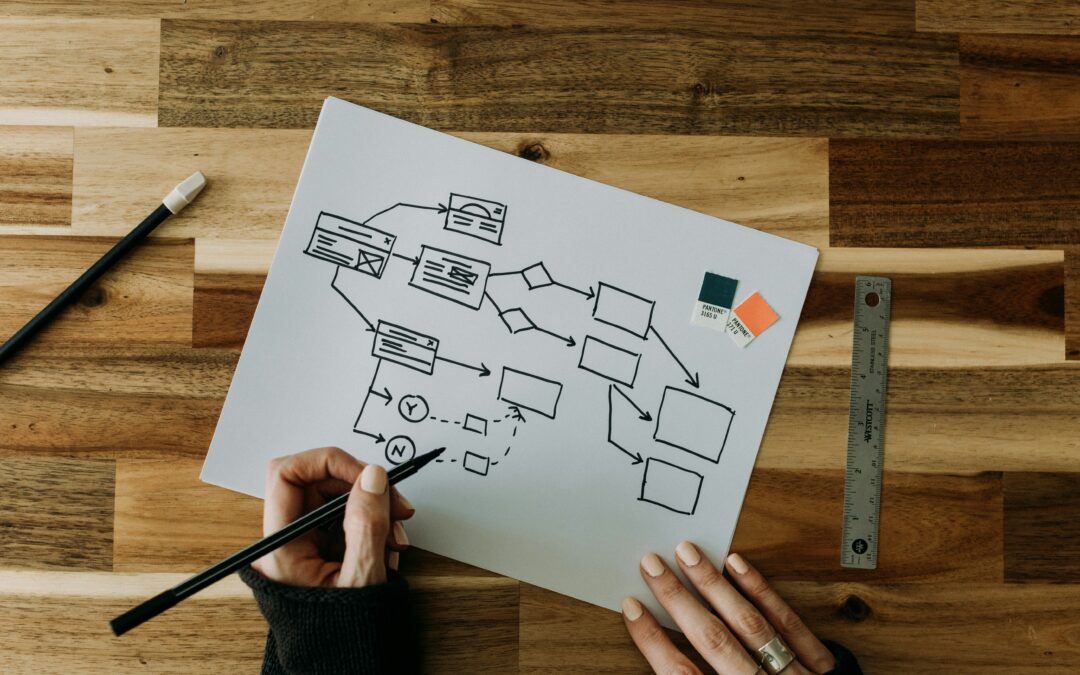Table of Contents
- Understanding Graphic Design
- Key Principles of Graphic Design
- Tools and Skills Required
- Casino Branding: Visual Identity in the Gambling Industry
- Exploring UX Design
- Core Concepts of UX Design
- Comparison of Core Concepts in Graphic Design and UX Design
- Essential Skills and Tools
- Popular UX Design Tools
- UX Design in Casino Online Platforms
- Graphic Design vs UX Design: Key Differences
- Goals and Objectives
- Design Process and Approach
- Roles and Responsibilities
- Casino Design: Visual Identity vs. User Experience
- Career Paths and Opportunities
- Job Roles in Graphic Design
- Job Roles in UX Design
- Casino Industry: Roles for Graphic and UX Designers
- Which Path Is Right for You?
- Factors to Consider
- Personal Interests and Strengths
- Casino Design: Contextual Considerations
- Conclusion
When I first started exploring design, I often wondered about the real difference between graphic design and UX design. Both fields seem creative and visually driven but they actually serve unique purposes and require distinct skill sets. It’s easy to get them mixed up if you’re just starting out or thinking about a design career.
I’ve seen how graphic design focuses on making things look beautiful and grabbing attention, while UX design is all about making sure users have a smooth and enjoyable experience. Understanding these differences not only helps you choose the right path but also gives you an edge in today’s competitive design world. Let’s dive into what sets these two disciplines apart and why it matters.
Understanding Graphic Design
Graphic design centers on visual communication, using imagery, color, and typography to convey messages and shape perception. I use graphic design to influence how users interact with products by drawing attention and establishing brand identity.
Key Principles of Graphic Design
I apply specific principles in my graphic design process to create compelling visuals:
- Balance: I arrange elements symmetrically or asymmetrically for a stable visual flow.
- Contrast: I make key elements stand out through differences in color, shape, or size.
- Alignment: I place objects purposefully to connect visual elements and ensure a structured layout.
- Repetition: I repeat colors, shapes, or patterns to strengthen brand coherence.
- Hierarchy: I establish importance through size, color, or placement, guiding users from key information to supporting details.
- Proximity: I group related elements to create associations and clarity.
Tools and Skills Required
I leverage various graphic design software and skills to achieve professional results. My primary tools and competencies include:
| Tool or Skill | Example Usage |
| Adobe Photoshop | Editing and retouching images |
| Adobe Illustrator | Creating vector graphics and logos |
| Adobe InDesign | Laying out print and digital publications |
| Color Theory | Selecting impactful brand colors |
| Typography | Choosing readable, appealing fonts |
| Layout Design | Structuring website or poster content |
Casino Branding: Visual Identity in the Gambling Industry
| Visual Element | Casino Environment Example | Purpose |
| Bold Color Schemes | Red and gold in signage | Elicit excitement and trust |
| Ornate Typography | Elegant script on chips | Suggest luxury and exclusivity |
| Iconic Symbols | Chips, cards, dice | Reinforce gambling context |
| Motion Graphics | Slot machine animations | Create dynamic, engaging vibe |
Exploring UX Design
UX design centers on creating products that offer satisfying user experiences through intuitive interactions. My focus in UX design lies in understanding human behavior, system usability, and the logic that guides each digital step.

Core Concepts of UX Design
Core principles in UX design drive every decision I make during the process.
- User-Centricity: I prioritize end-users by conducting research through surveys, interviews, and usability tests.
- Information Architecture: I structure content so users can find information quickly, using hierarchy and labeling.
- Interaction Design: I plan workflows and interactive elements like buttons, menus, and forms to match user expectations.
- Accessibility: I apply international standards like WCAG to make interfaces usable for people with disabilities.
- Usability: I evaluate systems based on learnability, efficiency, and error reduction.
Comparison of Core Concepts in Graphic Design and UX Design
| Concept | Graphic Design Example | UX Design Example |
| Focus | Visual storytelling | User journey mapping |
| Testing Approach | A/B testing visuals | Usability testing flows |
| Measured Outcome | Brand recognition | Task completion rate |
Essential Skills and Tools
My UX design workflow depends on several key skills and tools.
- Wireframing and Prototyping: I use programs like Figma, Adobe XD, and Sketch to create blueprints and interactive demos.
- User Research: I conduct interviews, surveys, and analytics reviews to guide design solutions.
- Usability Testing: I observe users with prototypes, measure interactions, and gather feedback for refinement.
- Collaboration: I coordinate with developers, stakeholders, and graphic designers for seamless integration.
Popular UX Design Tools
| Tool | Purpose | Typical Use Case |
| Figma | Prototyping, Design | Interface design |
| Sketch | Wireframing | Early-stage layouts |
| Adobe XD | Interactive Prototypes | Clickable demos |
| InVision | User Testing | Gathering feedback |
UX Design in Casino Online Platforms
In casino online platforms, UX design shapes how users navigate games, manage accounts, and complete transactions. I map user flows for tasks like depositing funds or selecting a game, applying clear calls-to-action, secure queues, and instant feedback. I align onboarding, promotions, and customer support tools with behavioral analytics to increase engagement and retention.
| Feature | UX Enhancement | User Benefit |
| Game Navigation | Logical categorization, search | Faster access to games |
| Payment Methods | Streamlined deposit/withdrawal | Quicker, safer transactions |
| Onboarding | Interactive tutorials | Reduced confusion, faster setup |
| Support Access | 24/7 chat integration | Immediate resolution of issues |
Graphic Design vs UX Design: Key Differences
Both graphic design and UX design shape how users engage with digital products, though they differ in focus, methodologies, and project outcomes. I break down the distinctions by examining goals, processes, roles, and a casino-specific example.
Goals and Objectives
Graphic design targets visual communication and brand impact, while UX design prioritizes seamless interactions and usability. In visual projects, I use color, typography, and imagery to trigger emotional responses or convey messaging. In digital products, I structure workflows to reduce friction and simplify completing user tasks.
| Discipline | Primary Goal | Example Objective | Measured Outcome |
| Graphic Design | Visual Attraction & Communication | Create a bold casino logo | Visual appeal, recall |
| UX Design | Positive User Experience | Streamline casino sign-up | Efficiency, satisfaction |
Design Process and Approach
Graphic designers emphasize creativity in layouts, aesthetics, and static elements. My workflow involves concept sketches, mockups, and refining composition in digital illustration tools. UX designers adopt a user-centered approach—conducting user research, building wireframes and interactive prototypes, running usability tests, and iterating based on feedback.
| Phase | Graphic Design (Casino Example) | UX Design (Casino Example) |
| Research | Study color symbolism in branding | Interview casino players |
| Ideation | Draft multiple slot game concepts | Sketch casino mobile navigation |
| Prototyping | Design static bonus badge artwork | Create clickable lobby mockup |
| Testing | Gather feedback on ad visuals | Observe players’ sign-up journey |
Roles and Responsibilities
Graphic designers create visuals—logos, posters, banners, and interfaces—to support casino branding or promotional needs. UX designers map user journeys, develop interaction flows, and test usability, ensuring platforms cater to different user scenarios.
| Role | Graphic Designer (Casino) | UX Designer (Casino) |
| Key Deliverables | Game icons, bonus badges | User flows, prototypes |
| Collaboration Partners | Marketing, illustrators | Developers, researchers |
| Success Metrics | Visual consistency, engagement | Task completion, retention |
Casino Design: Visual Identity vs. User Experience
I distinguish casino graphic design by its focus on striking visual identities—bold logos, vibrant palettes, and unique imagery to build brand recognition and attract players. In contrast, casino UX design centers on the user journey, easing registration, promoting responsible gaming tools, and facilitating secure transactions. Strong casino design integrates both domains to deliver a lasting, enjoyable player experience.
Career Paths and Opportunities
Graphic design and UX design open distinct career tracks. Each path attracts employers from varied sectors, but requirements and advancement options differ.
Job Roles in Graphic Design
Graphic design roles span industries like advertising, publishing, brand marketing, and entertainment. Typical positions include:
- Graphic Designer: I create visual concepts for print, digital ads, social media graphics, and branding materials.
- Brand Designer: I specialize in crafting complete visual identities, developing logos, typography, and color palettes.
- Art Director: I oversee visual direction for teams or campaigns, managing consistency and creative output.
- Production Artist: I handle technical aspects, preparing print or digital files for publication.
- Visual Designer: I focus on UI assets and interfaces, often collaborating in digital product teams.
Relevant expertise in Adobe Creative Suite, typography, and color theory drives career mobility. Advancement often leads to roles like Senior Designer, Creative Director, or agency leadership.
Job Roles in UX Design
UX design careers emphasize research, product development, and digital strategy. Key titles include:
- UX Designer: I design user journeys using wireframes, prototypes, and usability testing.
- UX Researcher: I gather user data through interviews, surveys, and analytics to drive design decisions.
- Interaction Designer: I refine interactive elements, focusing on flows, animations, and feedback mechanisms.
- Product Designer: I blend UX, UI, and strategy to create cohesive product experiences.
- UX Writer: I craft microcopy and interface text to optimize clarity and engagement.
Proficiency in tools such as Figma, Sketch, and strong user research capabilities typically lead to roles like Lead UX Designer, UX Manager, or Head of Product.
Casino Industry: Roles for Graphic and UX Designers
Casinos present specialized opportunities for both design fields. Graphic designers build alluring visual brands, while UX designers shape fluid gaming and transaction experiences.
| Casino Design Role | Primary Focus | Typical Task Example | Advancement Path |
| Casino Graphic Designer | Slot machine artwork, event promo visuals | Designing themed symbols for a new video slot | Senior Designer, Art Director |
| UX Designer (Casino) | Player flows, registration, in-game navigation | Mapping user journeys through multi-step game onboarding | UX Lead, Casino Product Manager |
| Motion Graphics Artist | In-game animations, visual effects | Animating bonus rounds with advanced particle systems | Animation Director |
| UI Designer | Betting screens, mobile interfaces | Creating clean wallet and withdrawal panels | Senior UI Designer, UX Director |
| Brand Manager (Casino) | Cohesive identity, marketing outreach | Ensuring campaigns align visually across all casino channels | Creative Director |
Demand for designers specializing in gaming interfaces and casino branding continues to rise, with cross-functional teams favoring those experienced in both visual and interaction design principles.

Which Path Is Right for You?
Choosing between graphic design and UX design depends on how you want to apply creative and problem-solving skills in digital and casino environments. I’ll outline key considerations and guide you through factors that align with each path.
Factors to Consider
Several areas shape the ideal fit for graphic or UX design, especially in casino experiences.
| Consideration | Graphic Design Context | UX Design Context |
| Main Focus | Visual storytelling, brand identity, striking imagery | Seamless interaction, user satisfaction, navigation |
| Typical Deliverables | Logos, banners, motion graphics, casino promotional materials | Wireframes, prototypes, casino app flows, user journeys |
| Required Skills | Typography, color theory, layout, branding | User research, prototyping, usability, information architecture |
| Testing Approach | A/B testing for visuals, brand recall studies | Usability tests, flow analysis, conversion tracking |
| Metrics | Visual appeal, recognition, brand engagement | Engagement rates, task success, retention, drop-off points |
I focus on the distinct outcomes. Visual-led design excels in grabbing attention and driving promotions, while UX design optimizes casino user flows and transaction efficiency.
Personal Interests and Strengths
Personal motivation and natural skill set shape success in either field.
- Enjoying Aesthetics: If I love experimenting with bold layouts, color palettes, and dynamic imagery found in casino themes, graphic design matches my creativity.
- Finding Patterns: If I gravitate toward solving navigation challenges, flow mapping, and testing varied casino user experiences, I thrive in UX design.
- Collaborating Preferences: I gravitate toward brand teams and marketing partners as a graphic designer; as a UX designer, I work closely with product managers, developers, and researchers.
- Adapting to Change: Graphic design skills suit fast-paced promotional campaigns, while UX design adapts to continuous casino platform updates and evolving user needs.
Casino Design: Contextual Considerations
Casino design highlights the intersection of both paths, stressing the need for hybrid skills.
| Casino Design Task | Graphic Design Role | UX Design Role |
| Branding and Visual Identity | Creating logos, icons, themed color schemes | Ensuring logos function across devices and dark modes |
| Slot Game Presentation | Designing reels, symbols, animations | Structuring interface layout for smooth play |
| Promotional Campaign Graphics | Crafting banners and bonus imagery | Optimizing entry flows for campaign participation |
| Registration and Onboarding | Designing visually appealing sign-up screens | Mapping user flows, reducing friction in registration |
| Payment and Cashout Experiences | Adding trusted brand visuals to payment options | Designing clear, secure transaction and feedback flows |
I see that choosing the right path means weighing the appeal of visual storytelling against optimizing player journeys in high-stakes casino environments.
Conclusion
Choosing between graphic design and UX design really comes down to where your passion lies and what kind of impact you want to make. Both fields offer exciting opportunities and the chance to shape how people interact with brands and digital products.
If you’re drawn to the power of visuals or the challenge of crafting seamless user journeys you’ll find a rewarding path in either discipline. No matter which direction you choose your skills will be in high demand—especially as industries like online casinos continue to evolve and blend both creative and user-focused design


